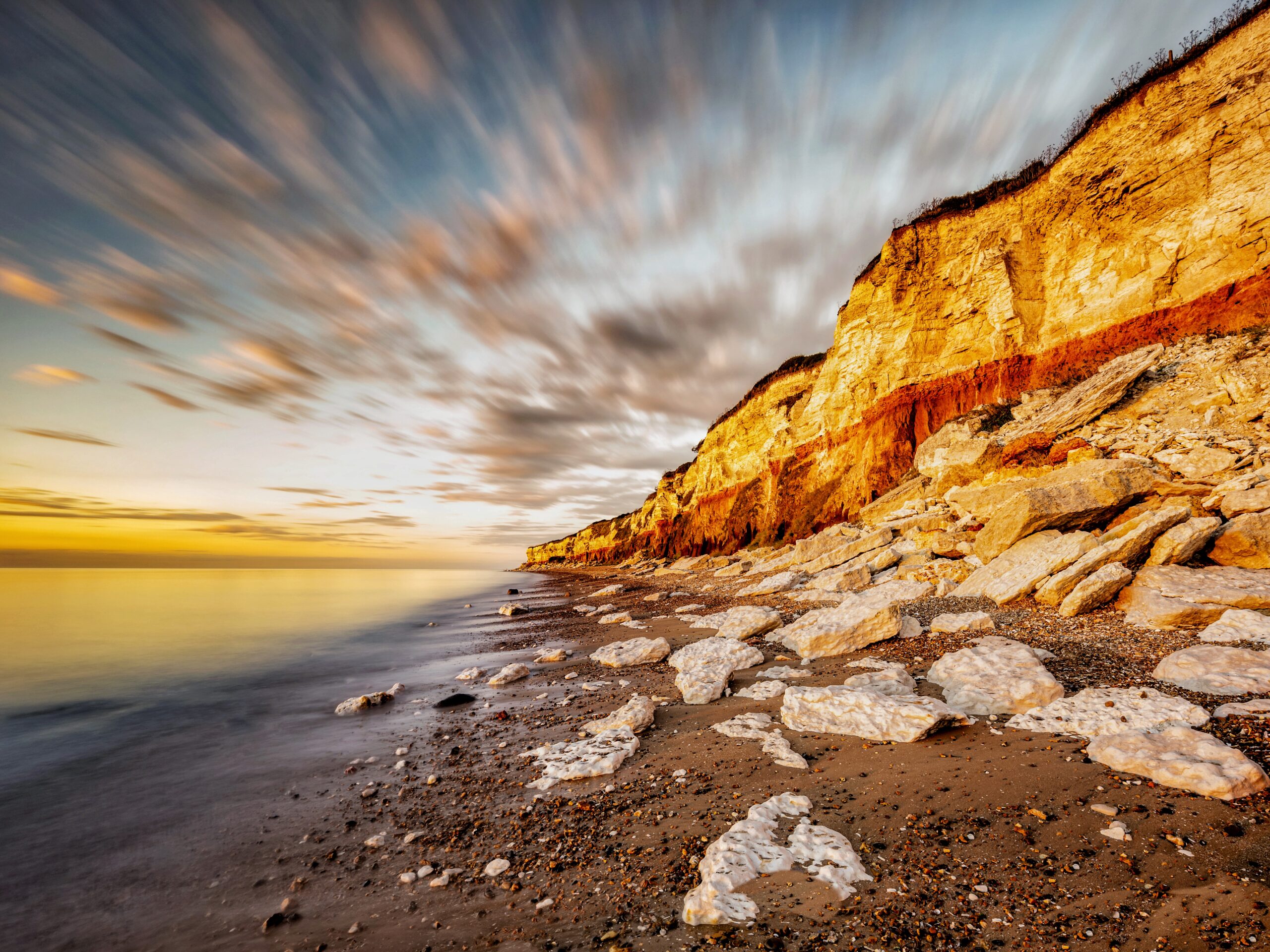I was excited when fellow club members suggested Hunstanton for our next sunset trip.
Why ‘Sunny Hunny’?
Popular theories as to why Hunstanton is called ‘Sunny Hunny’ are:
- It has some of the driest sunny weather in England
- It is near to the River Hun.
- Due fo the red ‘honeystone’ rock seen in the cliffs
On the ‘Bucket List’
Hunstanton has been on my bucket list for a while with the intention to grab a shot of the black rocks with the sea water receding and preferably with an epic sunset sky too!
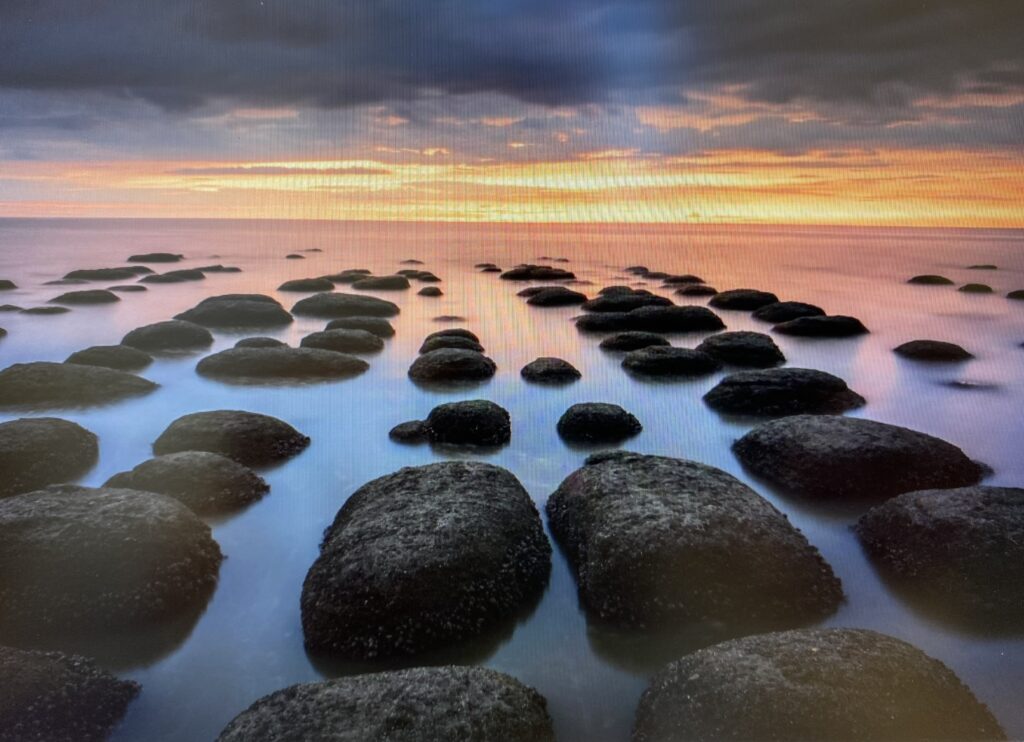
Would this trip deliver that or not? You’ve probably already guessed the answer thanks to the featured image.
Nostalgia for Hunstanton
My Mum and Dad used to take me, and then later me and my brother to Hunstanton at the weekend so the New Hunstanton part is very familiar to me, but it’s only in recent years I’ve visited the Old Hunstanton end and the beach, and every time with photography in mind.
I’ve looked up some details about Hunstanton both to add some interest to this blog, and to reminisce memories of trips here as a child.
About Hunstanton
Hunstanton is a seaside town in Norfolk England and faces west across The Wash. It is 102 miles north-east of London and 40 miles west of Norwich.
Hunstanton is a 19th century resort town, initially known as New Hunstanton to distinguish it from the nearby village of the same name.
The original settlement, now Old Hunstanton, probably gained its name from the River Hun, which runs to the coast just to the east.
It has also been argued that the name originated from “Honeystone”, referring to the local red carr stone. Clifftop walks lead to a redundant lighthouse and the ruins of St Edmund Chapel, built in 1272.
In 1846, principal landowner Henry L’Estrange Styleman Le Strange developed Old Hunstanton as a bathing resort and as director of the Lynn and Hunstanton Railway company which, despite his demise that year, became one of the most consistently profitable in the country.
In 1846, Le Strange moved the ancient village cross from Old Hunstanton to a new site and in 1848, the first main building, the Royal Hotel (now the Golden Lion) was built by a friend of his, Victorian architect William Butterfield.
Overlooking a sloping green and the sea, and for several years standing alone, it earned the nickname ‘Le Strange’s Folly”. In 2017, Hunstanton resident and civic society member Brian Holmes proposed the idea of a statue of the Victorian Nobleman to celebrate the contribution Le Strange made to Hunstanton. The £40,000 statue was funded by donations, lottery funds and the local council.
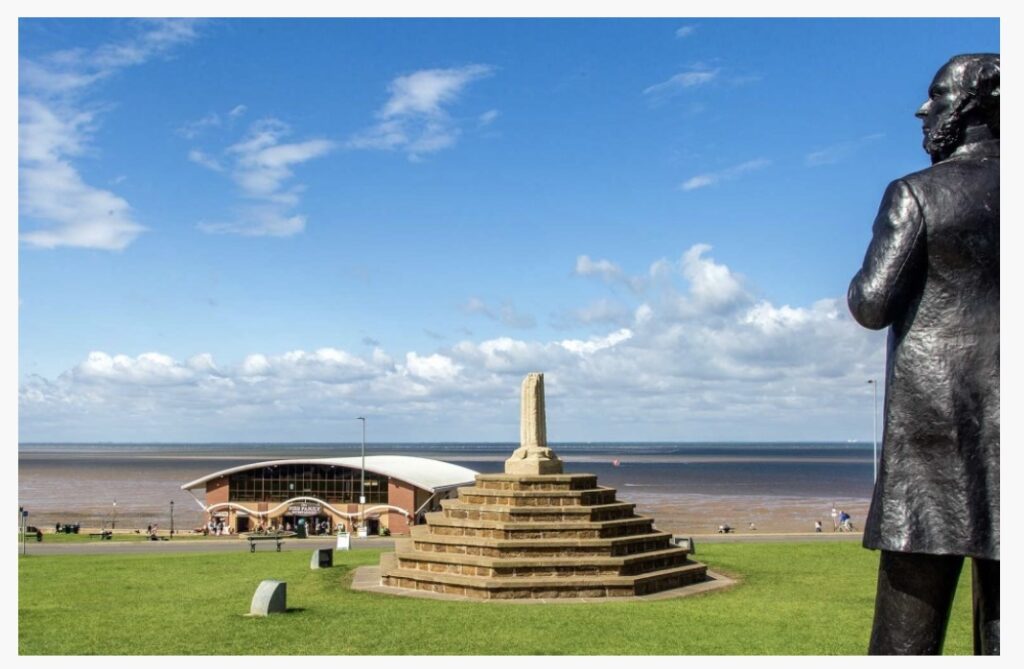
in 1915, during the First World War, Hunstanton was the headquarter of the West Norfolk training programme of the Queen’s Own Cameron Highlanders, as they prepared for active service on the Western Front.
Hunstanton was badly hit by the North Sea flood of 1953. The wall of water killed 31 people, 16 of which were US military personnel. There were 35 more victims in nearby Snettisham and Heacham.
The Shoot
We met at the clifftop car park in Old Hunstanton where you drive past the old lighthouse to enter.
Wellies on, kit bag on, and a short walk down some steps in the corner of the car park gets you to the beach, and the view of the high tide which we had checked would be receding.
Being a very warm and sunny early evening, the beach was busy but not packed so we made our way down to the area where the rocks would be. As you can see from a phone shot below, the tide was receding very slowly.
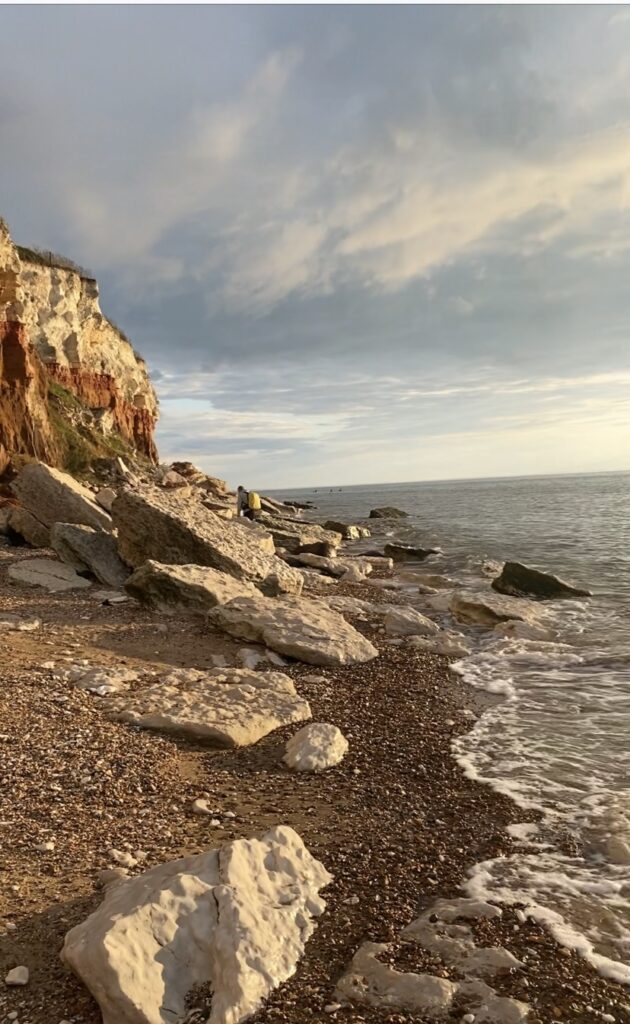
The guys had all gravitated to their starting positions and a few of had a chat while waiting for the tide to fall back. I could see back towards the beach that the most glorious golden hour style warm light was lighting up the colourful clifftop and couldn’t resist walking back to take some shots.
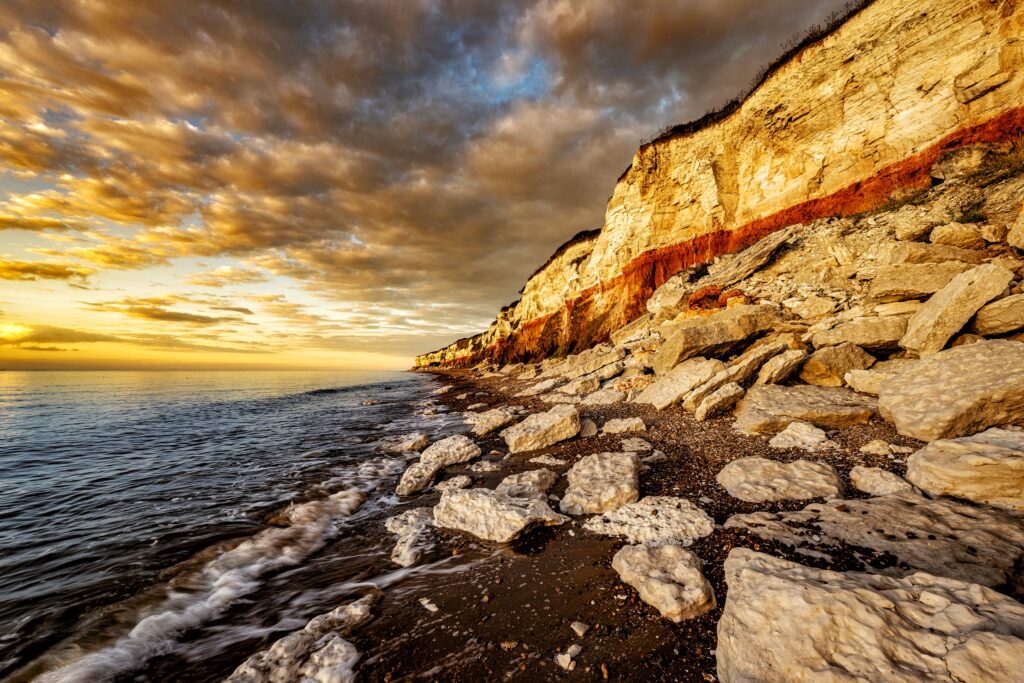
I spent what would be the most time of the evening in this part of the beach. The light was so amazing, I felt I wanted to just experiment. My usual favourite activity which I, addicted to, is to take lots of shots of the waves to capture texture in the water then took place.
It was a challenge where I was standing as I was slightly in the water, and thanks to the very slow receding tide, the inbound wave was still strong enough to splash up my wellies and over the top to wet my socks! I was more worried about those waves rocking my tripod and causing a blurry image.
After one or two of the guys who’d been shooting this scene before me shuffled round, I changed my position and decided to try a long exposure to see if a a dramatic sky shot was possible. An ND filter was applied and the shot below is my shot of the night.
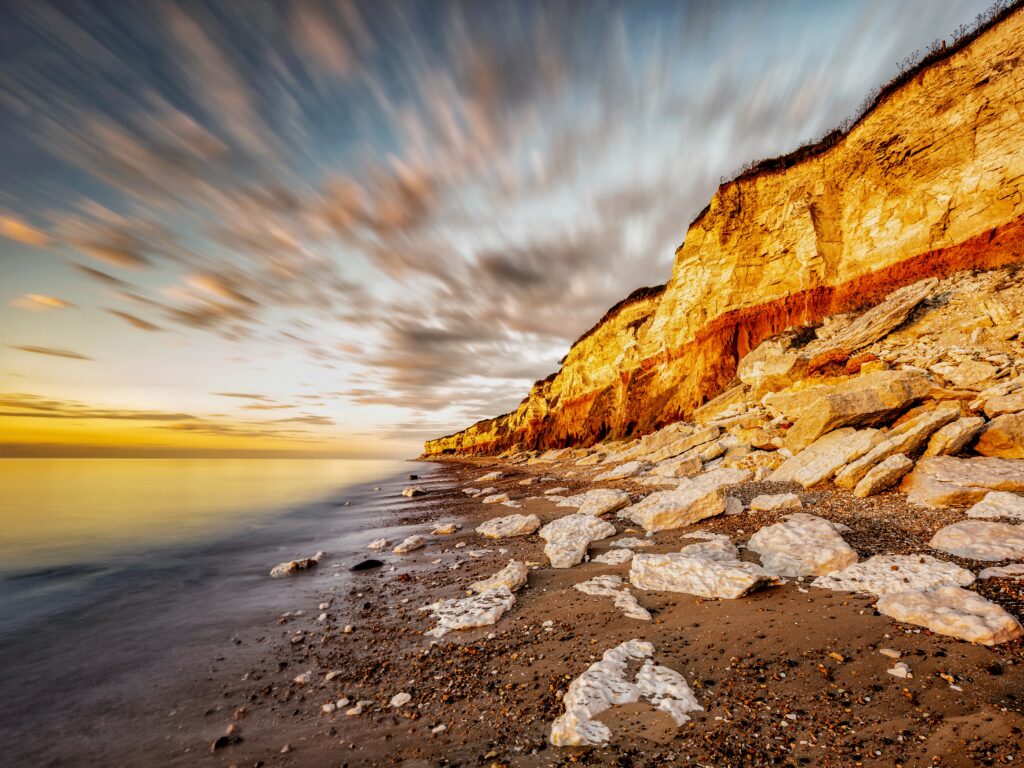
With the sun now dipping towards the horizon, and the shot above in the bag, I felt I should wander further down the beach back to the rocks.
Unfortunately the tide still had not fallen back to reveal the black rocks so at this point, we all realised we would not see them on this occasion.
I set up my tripod from a bit further back on the shoreline shooting out over the white rocks towards the horizon and sunset.
As I was taking my time, and completely relaxed on this warm chilled out evening very comfortable in just a t-shirt, I noticed the sun was dipping at an alarmingly fast rate, literally before my eyes. I rushed to get set and grabbed the shot below.
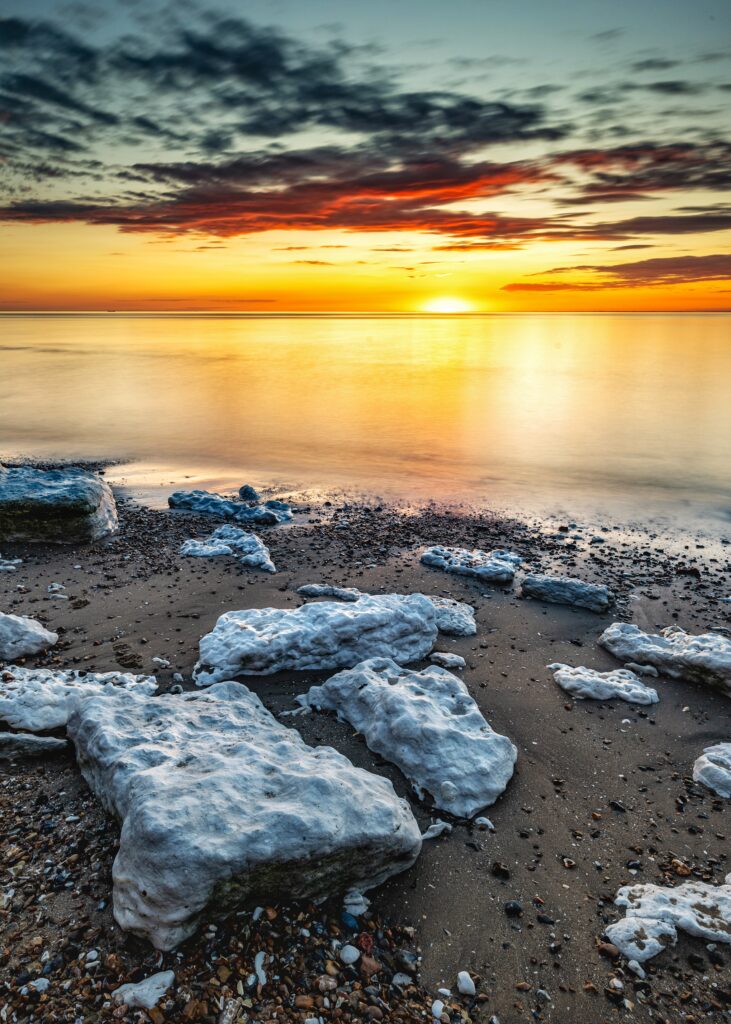
Once the sun had dipped low enough out of our sight, there was still an orange glow and some last few shots to be had I was interested to see some creative shots by fellow member that had skipped the obvious shot of the cliff and found some really good long exposure rock shots with the evening sun reflecting in the smoothed out water.
We all made our way back to the car park chatting about the evening, and unanimously all want to return, only next time with the timing of the tide and our visit to see and capture those illusive black rocks.
Onwards and upwards…
